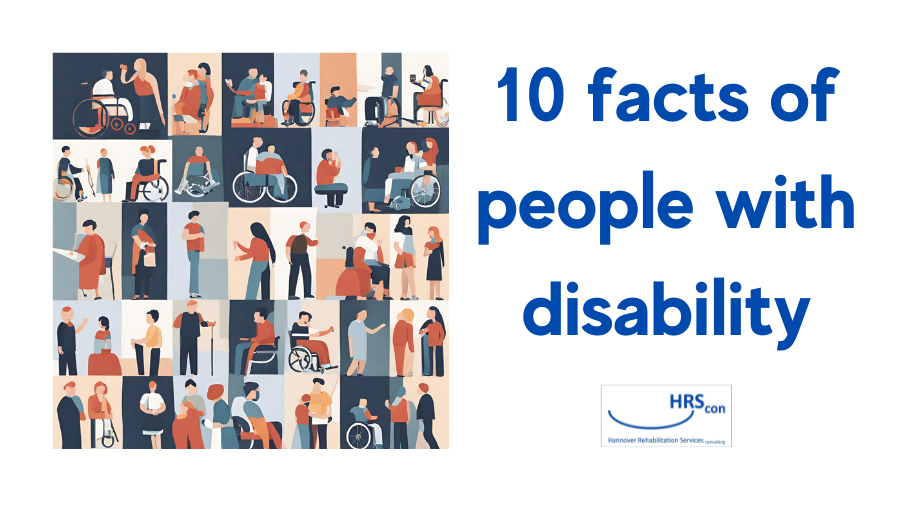Being different is normal for humans. Almost everyone will, at some point, face challenges because of a health issue. About 1.3 billion people, or 16% of the world’s population, currently deal with significant challenges because of disability. This number is going up because more people are getting older, and more are getting diseases that are not easily spread.
Disability happens when someone with a health issue, like cerebral palsy, Down syndrome, or depression, interacts with things like negative attitudes, places that are hard to get into, and buildings that aren’t easy to use. Also, limited help from others can make things harder.
Where someone lives and how they live can really affect how much disability they experience. Places that are hard to get around or use make it tough for people with disabilities to take part in society like everyone else. We can make things better by fixing these problems and helping people with disabilities in their daily lives. This way, they can be a part of society just like everyone else.
Below are the 10 facts of disability according to WHO
- “Over 1 billion people worldwide have significant disability. An estimated 1.3 billion people experience significant disability. This represents 16% of the world’s population, or 1 in 6 of us.
- The global prevalence of persons with disabilities is increasing substantially. This increase is due to demographic and epidemiological changes in the population (such as ageing and the global increase in chronic health conditions), and health emergencies (such as disease outbreaks, natural disasters, and conflicts).
- Persons with disabilities face many health inequities. Many persons with disabilities experience poor health outcomes and face barriers to access health services. For example, many persons with disabilities: are likely to die 20 earlier; have more than double the risk of developing conditions such as diabetes, stroke or depression; face the challenge of inaccessible health facilities, which is up to 6 times more hindering.
- Health inequities arise from unfair conditions that affect persons with disabilities disproportionately. These inequities largely cannot be explained in terms of the person’s underlying health condition or impairment. They are rather part of the wider socioeconomic and political context or the conditions in which people are born, grow, live, work and age. Persons with disabilities also experience increased exposure to risk factors and barriers to access the health system.
- COVID-19 exposed inequities and taught us valuable lessons to achieve health equity for persons with disabilities. The lessons learned from the COVID-19 pandemic can shape the way forward for achieving health equity for persons with disabilities, such as: The importance of the provision of accessible health services close to where people live; The engagement and participation of persons with disabilities in the processes and decision-making of the health sector; The delivery of public health interventions and information in an accessible format.
- Health equity for persons with disabilities is a state obligation. It is a state obligation to address existing health inequities so that persons with disabilities can enjoy their inherent right to the highest attainable standard of health. The Convention on the Rights of Persons with Disabilities (CRPD) promotes, protects and ensure human rights for all persons with disabilities. So far, more than 170 countries and regional integration organizations have signed the CRPD and over 130 have ratified it.
- Addressing health inequities for persons with disabilities benefits everyone. Taking action on health inequities benefits everyone simultaneously by contributing to universality, people-centeredness, and non-discrimination in health services and public health promotion. This allows health services to become more effective and responsive.
- Investing in health equity for persons with disabilities is an investment that could bring high dividends to individuals and communities. There could be a US$10 return for each US$1 spent on implementing disability inclusive prevention and care for noncommunicable diseases. Interventions such as family planning and vaccination could be highly cost-effective when provided in disability inclusive manner, despite the additional cost required.
- Advancing health equity for persons with disabilities contributes to the participation of persons with disabilities in society. Having good health and well-being is important for people to build a good and meaningful life. With appropriate support and services, persons with disabilities can participate in society as anyone else. This will lead to benefits to persons with disabilities, their families, and will strengthen communities and society as a whole.
- Countries are only 40 steps away from achieving health equity for persons with disabilities. All governments and health sector partners can make health equity for persons with disabilities a reality. WHO recommends 40 actions and 3 recommended principles: Include health equity at the centre of all actions; Empower and include persons with disabilities; Monitor the impact of health sector actions for persons with disabilities.”
Reference: WHO

